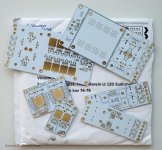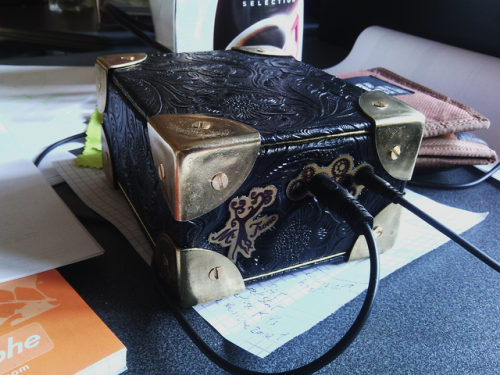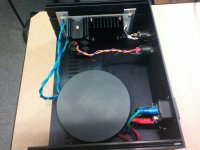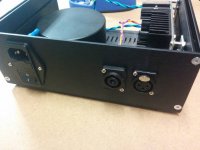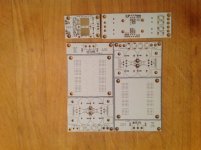Any news on the NTD1 boards?
Last time I ordered PCBs those were not available. Do I need to create a new entry in the spreadsheet?
Love your work and immensely enjoy The Wire!
Respect!
Thank you!
+1
Bal-Bal, gain with volume control
I posted this on the longer thread last week and I only got a reply suggesting that I switch to SE at my input to make volume control easier and then go balanced for my output. I really want this to be bal bal.
But, I am unsure if I understand this correctly:
I think gain is Rf/Ri, and from the thread note that if I want to use an attenuator, 10 K should be a good value (works fine with my source), I should up Ri and Rf to 10K. So—with a 10K pot and 10K Ri, is the input impedance 5K? does this mean that for a gain of 2, I leave Rf at 10K?
I posted this on the longer thread last week and I only got a reply suggesting that I switch to SE at my input to make volume control easier and then go balanced for my output. I really want this to be bal bal.
But, I am unsure if I understand this correctly:
I think gain is Rf/Ri, and from the thread note that if I want to use an attenuator, 10 K should be a good value (works fine with my source), I should up Ri and Rf to 10K. So—with a 10K pot and 10K Ri, is the input impedance 5K? does this mean that for a gain of 2, I leave Rf at 10K?
NTD1 PCB V3 - ($35 for a single stereo board with full PSU)
- 2 Layer PCB – 1oz copper – immersion gold plated – tented vias – white soldermask
- Designed to be used with BII, BIII and ACKO ESS9018 based DAC boards.
- Upgraded TPS7A3301 regulator section – Improved noise floor
- Same dimensions and mounting points as V2
- See project thread here: http://www.diyaudio.com/forums/digital-line-level/154866-new-take-classic-pass-labs-d1-ess-dac.html
Hi Owen,
When will we be able to order the new flavors of NTD1? Do you have a sign up sheet for them?
Thanks
Do
picovolt, you don't have to switch to SE to have a balanced volume control. If you have already googled balanced volume control, there is one method you will see that you have to put 2 resistors in series with the inputs of the op amps and then a volume control in between the inputs. You don't have to mod the boards, just add the parts externally to the board.
this is Bruno Putzeys bal vol controlI posted this on the longer thread last week and I only got a reply suggesting that I switch to SE at my input to make volume control easier and then go balanced for my output. I really want this to be bal bal.
But, I am unsure if I understand this correctly:
I think gain is Rf/Ri, and from the thread note that if I want to use an attenuator, 10 K should be a good value (works fine with my source), I should up Ri and Rf to 10K. So—with a 10K pot and 10K Ri, is the input impedance 5K? does this mean that for a gain of 2, I leave Rf at 10K?
4 parts on grounding each worth reading
http://www.edn.com/design/consumer/4429968/2/The-G-word--How-to-get-your-audio-off-the-ground
http://www.edn.com/design/consumer/...ow-to-get-your-audio-off-the-ground--Part-2--
http://www.edn.com/design/consumer/4430977/The-G-word--How-to-get-your-audio-off-the-ground--Part-3-
Part4 is specifically a bal to unbal with unbalanced active vol control and then back to bal for the output.
Note the the bal output is actually a "Balanced Impedance" connection. It is very similar to Jensen's in apnote3
see 2.4 a simple alternative.
http://www.edn.com/Home/PrintView?contentItemId=4431638
Bal converted to unbal to vol pot, then convert back to bal seems to be the only way to do it properly.
That's what I told you last week.
But you don't like the answer!
BTW,
there is a follow up in the "comments" pointing out that the rise in LF distortion starting @~200Hz was due to his mistakenly using a log pot in the active vol control feedback link.
He confirms this added distortion is removed when he changed to the lin pot he had planned to use.
Last edited:
- Home
- Vendor's Bazaar
- "The Wire" Official Boards for All Projects Available Here! BAL-BAL, SE-SE, LPUHP
